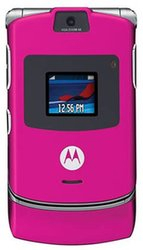 I’m still shaking my head over this one. Motorola, one of the stalwarts of the mobile communications industry, will split into two publicly traded companies in 2009, one for its profitable infrastructure equipment, the other for its not-so-profitable mobile handsets.
I’m still shaking my head over this one. Motorola, one of the stalwarts of the mobile communications industry, will split into two publicly traded companies in 2009, one for its profitable infrastructure equipment, the other for its not-so-profitable mobile handsets.
How did this happen?
And what does it mean for the mobile industry?
I’ll let Wall Street debate the finer details of how Motorola’s crash-and-burn happened, but it comes as no surprise. I’ve been watching Motorola lose its grip in the mobile industry for almost three years, since the heady days of the Razr.
Back in 2005, Motorola introduced the Razr as an exclusive fashion phone costing $600 with a service plan, $800 without — and people complained that Apple’s iPhone was too expensive at its introduction. Like the iPhone, the Razr was the must-have geek toy of its time.
In 2006, however, Motorola allowed the Razr to enter the mass market as a mid-price (then super-cheap) phone, which lessened its must-have coolness and social impact. It seemed every snot-nosed kid at the mall had a Razr stuffed in a back pocket.
 While it’s easy to say Motorola rested on its Razr laurels, in actuality the mobile industry was already passing it by.
While it’s easy to say Motorola rested on its Razr laurels, in actuality the mobile industry was already passing it by.
Samsung, South Korea’s largest conglomerate, had already begun its consumer electronics push with flat-panel televisions, cell phones, digital music players, digital cameras, among other products. In 2005 Samsung overtook Sony as the world’s No. 1 consumer electronics brand and along the way surpassed Motorola as the No. 2 mobile handset maker.
The world’s leading cell phone manufacturer, Nokia, was slowly been building (and solidifying) its handset business — it now has more than 40 percent of worldwide sales. At the same time the foundation was being set to move into the content business with a music store in the UK and Germany, the Ovi mobile portal, the N-Gage mobile gaming service, and its impending “Comes With Music” service.
 Motorola, in response, introduced a hot pink Razr, a blue version for the UK, even one for “Miami Ink”, a U.S. reality TV show.
Motorola, in response, introduced a hot pink Razr, a blue version for the UK, even one for “Miami Ink”, a U.S. reality TV show.
Even Motorola’s foray into the smart phone market, with the Q, seemed uninspired as Samsung, Sony Ericsson, and others made better phones using the Microsoft Windows Mobile operating system. Research In Motion’s BlackBerry was capturing business and the enterprise.
The mobile market was changing right in front of Motorola. Consumer habits were evolving — slim, colorful fashion phones were giving way to combo communications/entertainment devices, which are morphing into communications/entertainment/information mobile appliances.
Face it. The important players in the mobile industry no longer include Motorola, which has an 80-year history as a communications provider. The true mobile innovators are newcomers Apple and Google, along with Nokia and RIM, and maybe Samsung and Sony Ericsson.
So what does Motorola’s decline mean to the mobile industry?
One of its storied brands is in trouble.
Other than that, not much. The industry has long since passed Motorola by.

certainly like your web site however you need to test the spelling on several of your posts.
Many of them are rife with spelling issues and I
to find it very bothersome to inform the truth then again I will
definitely come back again.